Content |
|---|
History
Scottish native, the Gordon Setter was called for almost a century Black and Tan Setter, in reference to the color of their fur. Was not up 1924 when its name was changed to The Kennel Club, in memory of the Scottish Duke Alexander Gordon (1743-1827).
The latter played an important role in the development of the breed, creating at the end of the 18th century a hatchery in one of its castles, entirely dedicated to him, which allowed its standardization. Some believe other races also came into play (starting with the Saint Hubert Hound), but at least it is proven that the Gordon Setter is the result of the crossing between English Setter and Colleys. The resulting dogs had various coat colors ranging from black and white to red.. But, the Duke chose to favor black and tan subjects, excluding others from the brood; this explains why all representatives of the breed today wear this coat color.
Like this, the Gordon Setter became popular throughout Scotland and the rest of the UK in the early 19th century, to the point that it was one of the dogs exhibited in the first dog show in modern history, that was held in 1859 en Newcastle. In fact, its ability to adapt to any terrain, even the most rugged, makes you a perfect co-worker for hunting game birds.
Nor did he wait to leave his homeland. Like this, the first import of a Gordon Setter in France it dates back to 1840. Logically, the hunters would have been in charge of taking it to France. Just two years later, in 1842, Rake and Rachel were the first two representatives of the breed to cross the Atlantic and be imported to the United States. Your buyers, George Blunt y Daniel Webster, they acquired the breed directly from the kennel of the 5th Duke of Gordon, son and successor of Alexander Gordon.
The Gordon Setter was one of the first breeds recognized by the Kennel Club, the British organization of reference, since its creation in 1873. It was also one of the first nine breeds recognized by the American Kennel Club (AKC) when it was founded in 1884. But, the other reference organization in the country, the United Kennel Club (UKC), waited until 1949 to do the same. The Fédération Cynologique Internationale (FCI) it took even longer, since it was not until 1963 when he had to do the same.
But, although it is recognized around the world, the Gordon Setter is still a relatively rare breed. In United States, the Gordon Setter ranks 110 (of something less than 200) in the AKC breed classification, based on the number of births registered with the AKC each year, and the trend is for a slight decrease. In France, the number of new annual registrations in the Livre des Origines Français (LOF) has not stopped declining since the 1990s, having reached a peak in the late eighties. At that time there were more than 1.000, but today there are only a few 600, what to compare, for example, with the more than 5.000 of the English Setter.
In the United Kingdom, the Gordon Setter is considered by the Kennel Club as a vulnerable native breed. But, the number of births registered in the organization each year remains relatively stable around 250.
Physical characteristics
The Gordon Setter is a big dog, robust and well muscled. But, there are differences in size between individuals belonging to display lines and those belonging to hunting lines, the latter being significantly smaller.
The general appearance of the Gordon Setter conveys an impression of nobility and dignity. His chest is not very wide in front and his back is strong, rather short, with well arched ribs. His body is of medium length, short from shoulder to hips. Its tail is rather short and can be straight or slightly curved.
The head is taller than it is wide, with a well developed skull. The upper part of the skull is slightly rounded and the stop is well marked. Located at the end of a long snout, his nose is black and wide, with wide open nostrils. Master a strong and regular jaw.
The eyes of the Gordon Setter they are a good size, not too deep not too bulging. Dark brown and shiny, give it a lively look. Looking at your ears, they are falls, medium size and fine. They are set low and worn close to the head.
Like others Setters, the coat is soft and shiny, smooth or slightly wavy, but it should not be curly. It is of medium length over most of the body. But, is short on the top of the head and on the front of the legs, long and silky at the top of the ears, long and thin on the back of the hind legs. Last, on the belly forms a strip that can extend across the chest and throat.
Its fur is bicolor, mixing deep charcoal black and shiny chestnut. The border between black and brown must be clearly defined.
It also, chestnut-red markings can be seen in different places on the body. This is the case, in particular, above the eyes, with two spots that do not exceed 2 cm each. They are also found in the throat and on each side of the muzzle. They should not exceed the base of the nose; look like a band around the end of the muzzle. There are also two large chestnut-red spots on the chest.
Tan markings are also present on the inside of the hind legs, spreading out from the paws to the toes. They are also present on or slightly above the front legs and around the anus.
Some individuals also have a white patch on the chest and/or black spots on the toes and under the jaw..
Last, sexual dimorphism is not very pronounced, since males are not normally taller than 4 cm more at the withers than females.
Height and weight
-
▷ Male size: Of 66 to 66 cm.
▷ female size: Of 62 to 62 cm.
▷ Male weight: 29 kg
▷ female weight: 25 kg
Character and skills
The Gordon Setter He is a kind and very affectionate companion with his master. He is quite energetic in his youth, but it becomes much calmer as an adult.
It is an ideal dog especially with children, with whom he is tolerant and protective, and with whom he enjoys playing. But, given its size, it is better if they are already a certain age, as you will soon be able to involuntarily push them. In any case, regardless of race, a dog should never be left alone with a small child, that is to say, without adult supervision. In fact, An accident can happen at any time if you misinterpret a child's behavior and think that they are attacking. The risk of unfortunate consequences - even very serious ones- is even greater with an animal of that size, that could unintentionally upset a young child.
The close bond with the family can become problematic and can be counterproductive if the family has to be away from home often and/or for long periods of time. The dog is very likely to develop separation anxiety, what can lead to destructive behavior, escape attempts or excessive moaning.
You're also likely to be upset if you can't exercise for at least an hour a day. Although it is not at all suitable for an elderly and / or very sedentary person, it is an ideal companion for the owner of a dog who dreams, for example, with jogging with your dog, ride a bike with him or take him for long walks. But, it is essential that the rappelling process is mastered so that the dog can run without a leash, as his hunting instinct can take over at any time. He also likes games and loves to swim and play in the water.
If he is walked several times a day and his important need for exercise is satisfied, the Gordon Setter it is quiet and peaceful inside the home, able to live both in the city and in the country, and easily adapts to apartment living. If you live in a house with a garden, we must ensure that it is well fenced, since he is a fugitive by nature. Using an underground electric fence would not be an effective solution, since your determination is much stronger than the discomfort caused by electrical impulses, especially when it has sniffed a prey. In any case, it cannot be a question of making him live outside. In fact, to be happy and balanced, needs to be surrounded and interact with their masters, to feel like he is a full member of the family pack.
Although at Gordon Setter he likes to be surrounded, you greatly prefer to be around people you know or, at least, of other animals that you are used to seeing. On the other hand, he is quite suspicious, reserved and impassive with strangers, not hesitating to bark if it perceives the slightest danger. So, can be a good watchdog. They are also sometimes aggressive towards other dogs they meet for the first time.. In fact, is often a dog with a dominant temperament, who therefore wishes to seize his companions. A thorough socialization started at a very young age is de rigueur so that you learn to respect them.
But, coexistence with other animals in the home is not impossible, and having a playmate is a good way to avoid boredom in the absence of their masters. In fact, if they have grown up together, everything usually goes very well. On the other hand, the arrival of a new animal at home is only possible if it is used to living with other animals since childhood. If that is not the case, your hunting instinct is likely to lead you to regard the newcomer as prey. The same goes for the animals you see outside, especially those who venture into your garden.
His dominant character, independent and determined can also be a source of problems in the relationship with his master, if he does not know how to impose himself and make his dog respect him. A firm education is essential to prevent him from becoming difficult to handle., doing what he pleases.
Education
The socialization of Gordon Setter should be done at a young age, period when learning is easier, since it is more malleable and adaptable. Thus, it is necessary to get used as often as possible to meet new people and to face all kinds of situations and external stimuli (noises, smells, vehicles…). On the other hand, it is just as essential to teach them to tolerate loneliness, so your teacher's absences don't become a problem later. These two aspects are essential requirements to achieve a balanced and serene companion.
Given its size and its significant need for maintenance, it is convenient to get used to being handled without flinching from an early age, otherwise he will have problems when he is an adult. In view of his strong hunting instinct, learning to remember your dog is at least as important as basic commands (“Sit down”, “walk”, “stay”, etc.). This allows the dog to shed without having to worry too much, which makes it easier for him to exercise by himself and, Therefore, make you feel comfortable. Of course, this is especially important if it is used as a hunting dog. As long as I don't obey this order, must be carried on a leash when walking.
It also, the Gordon Setter it is an intelligent breed of dog and learns quickly. But, as is often the case with intelligent dogs, They are not the kind that take for granted: with a strong character, can quickly become very stubborn. This means that, to be obedient, You have to give him a firm education to prevent his intelligence from turning against his master and getting the best of him as soon as he gets home. But, do not punish your dog in any way when he does something wrong: as the Gordon Setter not really receptive to reprimands, it is better to opt for the positive reinforcement method, with the help of treats in particular.
Last, if it is intended to be used for hunting, the report and the notion of resignation are added to the reminder as indispensable teachings. In effect, must be able at all times to return when his master calls him, to catch a prey without biting it and to give it up if its owner asks.
Health
The Gordon Setter is generally in good health.
But, may be exposed to various pathologies of varying severity, as :
- The stomach dilation-torsion syndrome, common to most large breeds of dogs and can lead to rapid death of the animal if not attended to quickly;
- The hip and elbow dysplasia, also common in large dogs. Produces pain and lameness caused by inflammation of the joints, which can lead to osteoarthritis.
- The progressive retinal atrophy, an inherited disease that causes retinal degeneration and can lead to total loss of vision;
- The Hypothyroidism, a hormonal disorder responsible for many symptoms that vary from person to person;
ear infections, due to the drooping shape of their ears; - The abiotrofia cortical cerebelosa, a severe inherited neurological disease due to premature degeneration of cerebellar cells. If adopted from a breeder Gordon Setter, DNA test results should be requested to establish that the puppy does not have the gene responsible for this disease. In any case, a worthy breeder does not breed an individual with a genetic disease. In the case of adoption by another route, DNA testing can be done before taking the plunge, in order to rule out this risk.
It also, as with all large breeds, It is strongly recommended to avoid subjecting a puppy to Gordon Setter to excessive physical exertion. In effect, it is very fragile during its growth, especially at the level of your bones and joints. The utmost care must be taken during this period.
Life expectancy
13 years
Grooming
The coat of the Gordon Setter requires special care and maintenance. Brushing two to three times a week with a brush or glove is essential for the sebum to be well distributed throughout the coat., removing dead hairs and preventing them from tangling. Although hair loss is moderate, brushing should be daily, during the seasonal moult in spring and fall. It is also necessary to wash the dog once every one or two months to avoid bad smells and clean its coat: due to hair length, tends to collect dirt easily. But, you must be careful not to wet the inside of their ears, as it is easily prone to ear infections.
It also, the hair between the pads and inside the ears should be trimmed once a month to reduce the risk of infections caused by small plants or spikelets that could get stuck in the pads.
It also, pay special attention to your ears. Like any dog with floppy ears, are at increased risk of infections (otitis, etc.). So, should be inspected and cleaned at least once a week, and ideally every time the dog comes into contact with water, for example during a hunting trip or after bathing. This is also an opportunity to check your eyes and clean them if necessary..
Looking at your teeth, cleaning is necessary at least once a week, as for all other dogs. Regular use of a dog toothbrush or finger pad will help limit tartar and bad breath..
Last, given your level of activity, natural wear and tear is usually enough to trim the claws of the Gordon Setter. But, as you get older or don't walk enough, claws can become too long and become a nuisance or even injury. If this happens, must be trimmed with a special file or nail clippers. If the owner is not very comfortable with this maintenance task, you can ask your vet to do it or, at least, teach him how to do it so he can do it himself.
Use
Born hunter, the Gordon Setter has long been used as a hunting dog and as a pointing and collecting dog. Although they are not very fast compared to others Setter, their stamina and keen sense of smell make them excellent woodcock hunters, partridges and retrievers.
Today, although they are still used primarily as bird hunting dogs, they are also increasingly found as companion and show dogs. His calm character, gentle and affectionate makes them very endearing pets, as long as their owners are able to satisfy their need for exercise.
Their loyalty to their owners and their distrust of strangers also make them excellent watchdogs.. So, it is also a good companion for canicross, canine mountain biking or any other sporting activity, thanks above all to its resistance and its robust character.
Last, its elegance, as well as his noble attitude, also make him a competitor of choice in canine beauty contests.
Price
The price of a puppy Gordon Setter varies between the 700 and 1200 euros in Europe .
Regardless of location, price differences from one individual to another are explained by their greater or lesser conformity with the norm, as well as by their sex: males are significantly more expensive than females.
Characteristics "Gordon Setter"
Coexistence is important that you have with your new friend. Before considering the acquisition of a dog of the breed "Gordon Setter" you know certain factors. Not all breeds of dogs are apt to live in an apartment, you must take into account his character, their need for exercise, their interaction with other pets, their care and if you have small children, their level of tolerance towards them.
Adaptation ⓘ2.0 out of 5 stars (based on 1 review)
|
friendly dog ⓘ4.0 out of 5 stars (based on 1 review)
|
hair loss ⓘ3.0 out of 5 stars (based on 1 review)
|
|---|---|---|
Affection level ⓘ5.0 out of 5 stars (based on 1 review)
|
Need for exercise ⓘ5.0 out of 5 stars (based on 1 review)
|
Social need ⓘ3.0 out of 5 stars (based on 1 review)
|
Home ⓘ3.0 out of 5 stars (based on 1 review)
|
Toilet ⓘ3.0 out of 5 stars (based on 1 review)
|
Friendly with strangers ⓘ2.0 out of 5 stars (based on 1 review)
|
barking ⓘ3.0 out of 5 stars (based on 1 review)
|
Health ⓘ3.0 out of 5 stars (based on 1 review)
|
Territorial ⓘ2.0 out of 5 stars (based on 1 review)
|
Cat friendly ⓘ2.0 out of 5 stars (based on 1 review)
|
Intelligence ⓘ3.0 out of 5 stars (based on 1 review)
|
Versatility ⓘ3.0 out of 5 stars (based on 1 review)
|
Child friendly ⓘ4.0 out of 5 stars (based on 1 review)
|
Surveillance ⓘ2.0 out of 5 stars (based on 1 review)
|
joy ⓘ5.0 out of 5 stars (based on 1 review)
|
Images "Gordon Setter"
Photos:
1 – The picture shows a Gordon Setter in the typical work of the race in the field. by Nordic-Gordon-Hunters, CC BY-SA 3.0, via Wikimedia Commons
2 – Gordon Setter by richkidsunite
3 – Gordon Setter at a dog show in Konopiska, Poland. by Pleple2000, CC BY-SA 3.0, via Wikimedia Commons
4 – Gordon Setter at a dog show in Konopiska, Polonia by Pleple2000, CC BY-SA 3.0, via Wikimedia Commons
5 – Gordon Setter by https://pixabay.com/photos/dog-setter-gordon-animal-pet-4320937/
6 – Gordon Setter by https://pixabay.com/photos/dog-setter-gordon-animal-pet-4320945/
Videos "Gordon Setter"
Type and recognitions:
- FCI CLASSIFICATION: 6
- Group 7: Pointing Dogs
- Section 2: British and Irish Pointers and Setters. 2.2 Setter. With proof of work..
Federations:
- – FCI – Group 7: Pointing Dogs. – Section 2: British and Irish Pointers and Setters. 2.2: Setter ⓘ
- – AKC – Sporting ⓘ
- – KC – Gundog ⓘ
- – UKC – Gun Dogs ⓘ
FCI breed standard "Gordon Setter"
Alternative names:
1. Black and tans (English).
2. Setter Gordon (French).
3. Gordon Setter (German).
4. Setter gordon (Portuguese).
5. Setter escocés (español).
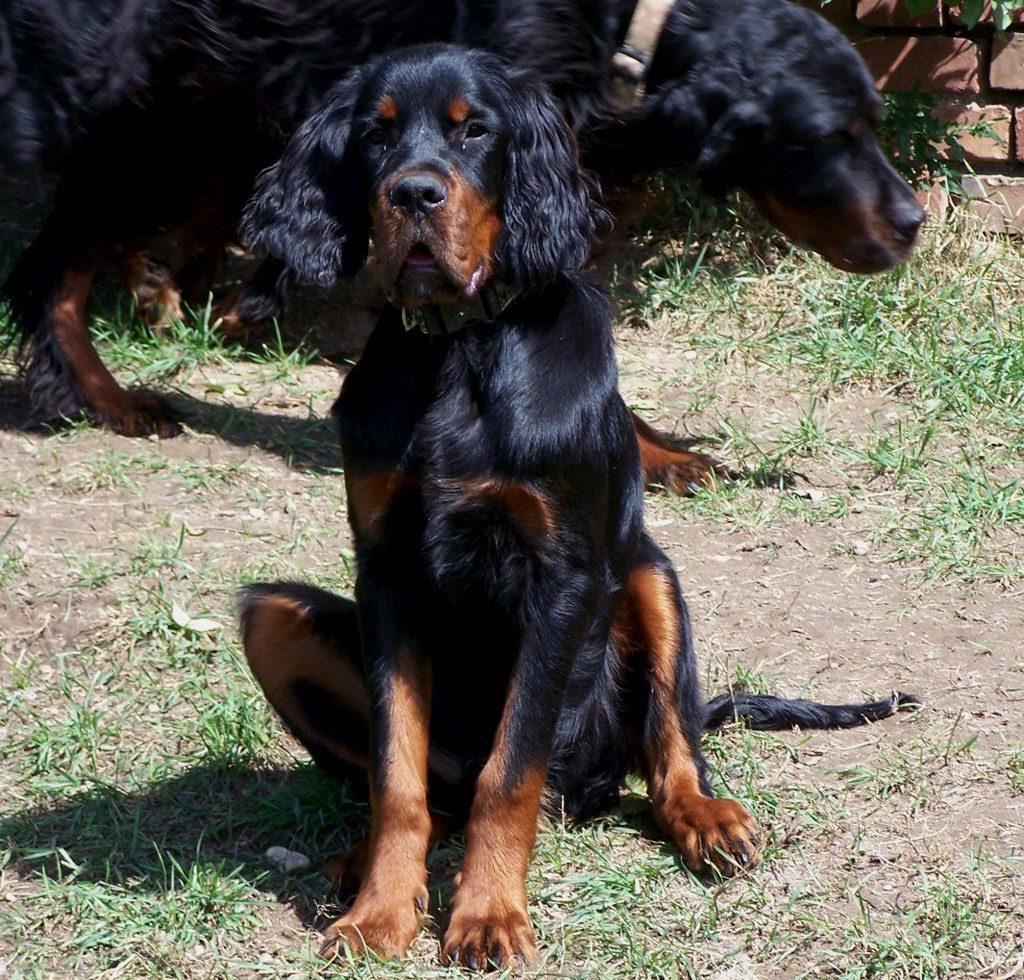
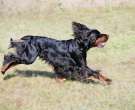
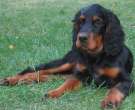
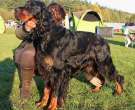
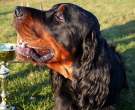


 scottish setter (Gordon Setter) – Breed of dog
scottish setter (Gordon Setter) – Breed of dog Forester’s of Darkmoor (Gordon Setter)
Forester’s of Darkmoor (Gordon Setter) Gordon Setters – Bests of Breed
Gordon Setters – Bests of Breed Dog Breed Video: Gordon Setters
Dog Breed Video: Gordon Setters